15 best ESG software platforms 2026 for UK businesses


The 15 Best ESG Software in 2026
Why More Companies Are Turning to ESG Software
What Kind of Companies Should Use ESG Software?
3 Key Differences Between Generic vs. Specialized Tools
3 Common Challenges in ESG Management and How to Solve Them
Dcycle: The ESG Platform That Adapts to Any Use Case
Frequently Asked Questions (FAQs)
Looking for top tools to manage sustainability? Here’s our breakdown of the best ESG software companies for 2026:
15 Best ESG software platforms in 2026 for UK businesses, the ultimate guide for UK companies that already know sustainability isn’t a trend, it’s a business requirement. In 2026, managing ESG data effectively is no longer just about compliance, it’s about gaining a clear competitive edge.
With frameworks like CSRD, the EU Taxonomy, SECR, and the new ISSB S1 and S2 standards, the era of spreadsheets is over. Companies now need ESG software platforms that automate workflows, ensure traceability, and turn data into actionable insights.
This list showcases the 15 leading ESG solutions for UK businesses in 2026, from lightweight tools for SMEs to enterprise-grade systems capable of managing complex global reporting and multi-framework compliance.
Each platform has been evaluated for automation, scalability, compliance coverage, and user experience, helping you choose not just software, but a strategic partner in your sustainability journey.
Because in 2026, ESG software isn’t optional anymore, it’s the foundation of credibility, competitiveness, and long-term business growth.

Dcycle is not a consultancy or an auditor. It’s a solution designed for any company that truly wants to manage its ESG impact.
The goal?
To help you measure, manage, and communicate your environmental, social, and governance data without going crazy.
We gather all your ESG data and connect it with the uses you need: from your EINF to CSRD, including SBTi, EU Taxonomy, ISO, or anything else on your plate, all while providing clear insight into your ESG score and performance across frameworks.
No mess. Everything in one place, with full traceability.
Our logic is clear: sustainability is no longer an “extra,” it’s a strategic driver.
If you don’t use it, you’re out.
If you do it right, you’re one step ahead.
The best part?
No more spreadsheet juggling or wasting time on slow processes.
We automate and simplify: we collect, process, structure your data and return it ready to use.
Dcycle is for companies that want clarity, agility, and real results.
And that understand regulatory compliance is just the beginning.
What matters is turning data into decisions that improve your business.
Experience our platform firsthand, schedule a demo.
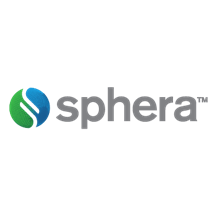
Sphera focuses on integrated risk and sustainability management.
It has a strong emphasis on EHS (health, safety, and environment), with specific ESG modules.
It’s a solid choice for industrial companies or those with complex operations, though it may require significant customization and technical resources.
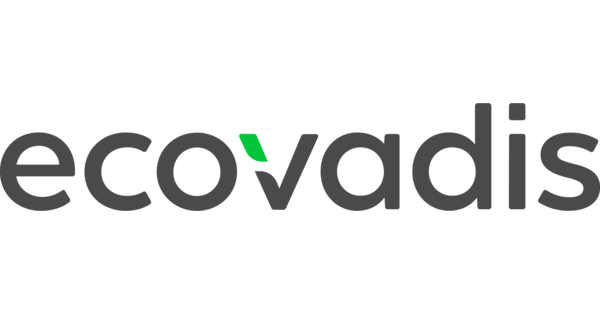
EcoVadis specializes in ESG evaluation and scoring for supply chains, helping companies demonstrate compliance with the non-financial reporting directive.
It’s known for its rating reports and for easing supplier relationships.
Useful for companies that work with many third parties and need external ESG performance tracking.
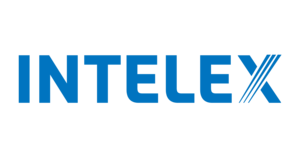
Intelex offers a robust platform for managing quality, health, safety, and environment, with added ESG features.
It provides many customization options, but that also means time and staff are needed to implement it properly.
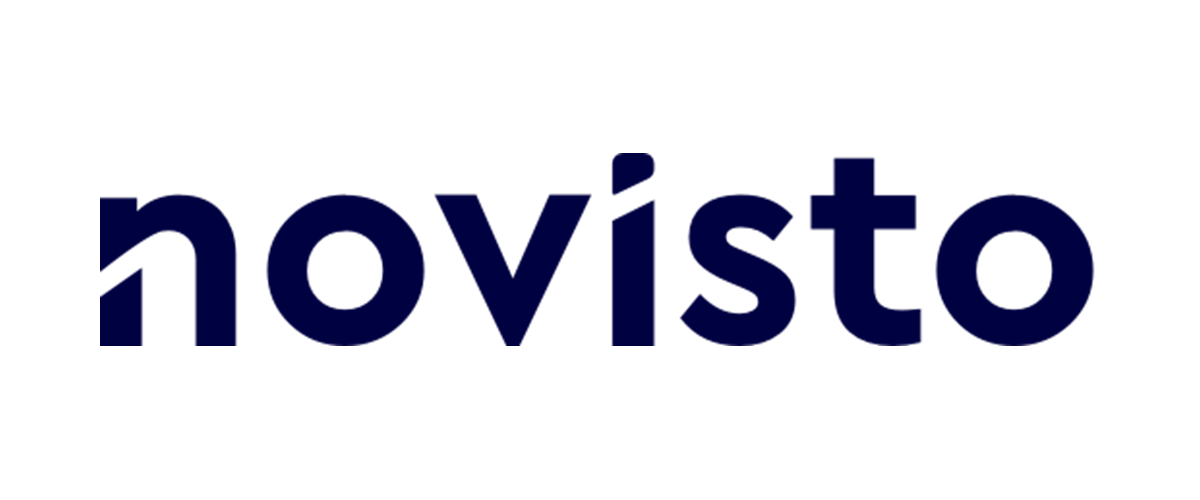
Novisto is focused on collecting and reporting ESG data.
It automates reports and improves transparency with stakeholders.
A good fit for companies with clear reporting needs, especially those publicly traded or managing their stock exposure through transparent ESG practices.
Plan A is built around corporate decarbonization and automated reporting.
It takes a more technical approach to identifying and reducing emissions, supporting Net Zero goals.
Emission factors and their customization play a key role in making those calculations accurate and tailored to each business, especially when supported by detailed carbon footprint paper methodologies.
Great for companies that already have a carbon reduction plan and need reliable data to execute it.
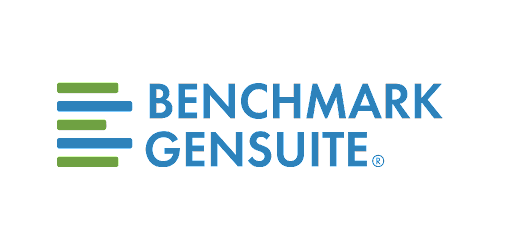
Benchmark combines EHS management solutions with ESG modules.
It excels in regulated industries needing control over many operational variables.
Offers multiple integrations, though the user experience can be complex if you’re not familiar with the platform.

Enablon, part of Wolters Kluwer, offers advanced solutions for ESG, risk, compliance, and more.
Designed for large enterprises with complex structures.
A complete solution, more suitable for organizations with prior experience in sustainable data management.

ESGgo is focused on simple ESG reporting, especially for startups and small and midsize enterprises.
It offers a direct approach and good metric visualization.
Works well if you’re looking for something agile and visual, without needing major integrations.

FigBytes offers a visual, results-based approach.
It connects ESG strategy with clear metrics and intuitive visual tools.
Ideal for companies that want to better communicate their progress and align sustainability with business goals.
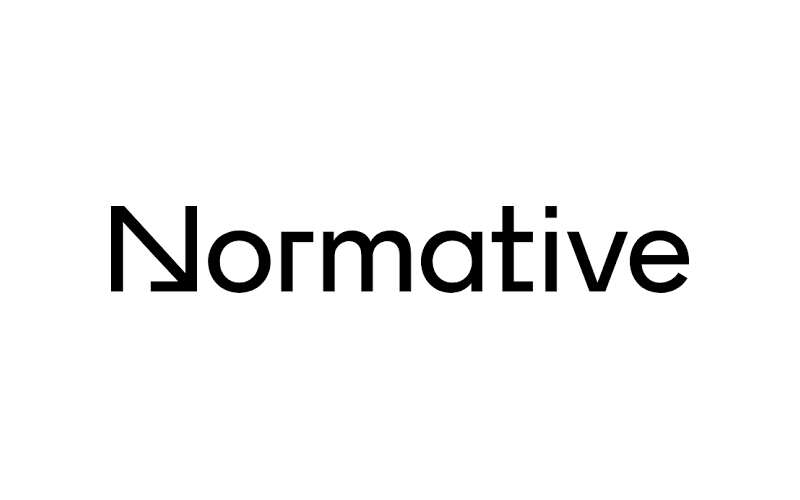
Normative focuses on carbon accounting, helping companies accurately calculate their emissions.
It’s a solid pick if you already have some data and need a system to organize it and show you what to do next.
Its strength is calculation precision, though it might not be the fastest if you're looking for plug-and-play agility.

Sustain.Life is designed for small and medium-sized businesses looking to start with sustainability without too much hassle.
It offers basic but useful features to track carbon footprint, set goals, and generate reports.
It’s a friendly entry point into ESG, though it may lack flexibility if you need deeper customization.

Measurabl is well-known in the real estate and asset management sectors.
It helps you gather and report ESG data across multiple buildings and physical assets.
If you're in real estate or manage large portfolios, this could be your go-to platform.

Persefoni is a SaaS platform built around carbon as its core. It helps large enterprises calculate, analyze, and report their footprint.
It integrates with key frameworks like the GHG Protocol and offers a clean interface, though it's better suited for data-savvy teams.

Watershed is a strong option for companies looking to decarbonize fast.
It performs especially well in tech-driven environments and fast-growth companies that want clear, visual results.
It supports science-based targets (SBTi) and stands out for its speed of deployment.
Because there’s no alternative.
The market demands it, the regulations require it, and your competitors are already doing it.
If you don’t measure your ESG impact, you’re missing out on opportunities (and money).
More companies are integrating ESG solutions into daily operations because they understand:
this isn’t about trends, it’s about business.
Want to be more competitive?
Then you need clear, up-to-date, and actionable data.
Additionally, modern ESG strategies increasingly include principles of sustainable governance and a focus on environmental sustainability, aligning operational practices with long-term ecological and ethical commitments and grounded in ESG best practices, often implemented through dedicated ESG software platforms that ensure efficiency and compliance.
Before diving into rankings and features, it’s worth remembering why ESG software matters now more than ever.
In 2026, sustainability reporting stopped being optional — it’s a regulatory and market requirement. The EU’s Corporate Sustainability Reporting Directive (CSRD), the EU Taxonomy, and new global frameworks from the ISSB (IFRS S1 and S2) are reshaping how companies manage, audit, and publish non-financial data.
At the same time, investors are tightening expectations: transparency, traceability, and verifiable impact are the new baseline.
Without proper ESG data managemWithout proper ESG data management or external verification, companies risk greenwashing accusations, reputational damage, and even legal exposure.ent, companies risk greenwashing accusations, reputational damage, and even legal exposure.
That’s why ESG software has evolved from a “nice-to-have” tool to a core business system, integrating sustainability into daily operations, financial planning, and strategic reporting.
Early 2026 brings a clear shift in European ESG reporting. ESRS requirements are being streamlined, with fewer mandatory datapoints, but regulators and auditors are raising the bar on data quality, traceability and consistency with financial reporting. As a result, ESG software is moving away from simple checklists towards platforms that manage evidence, version control and audit trails from day one.
AI is becoming mainstream in ESG platforms, especially for data validation, anomaly detection and regulatory alignment. The key change in 2026 is not just automation, but governed AI.
Companies are prioritising tools that apply AI with clear rules, permissions and human oversight, reducing the risk of incomplete or misleading ESG data making it into official reports.
Scope 3 remains the hardest challenge. In January 2026, the focus is clearly on supplier data orchestration, not just calculation. In Spain, industry initiatives led by organisations like AECOC are pushing standardised carbon data exchange across supply chains.
This reinforces the trend towards ESG software that can request, validate and reuse supplier data, rather than relying on estimates alone.
For companies operating in Spain, the Real Decreto 214/2025 is now fully in force.
It links carbon footprint calculation with mandatory reduction plans, increasing the need for ESG platforms that support traceable calculations, historical comparisons and exportable reports. Excel-based approaches are increasingly risky in this context.
The ESG software market continues to consolidate.
One of the most discussed moves is the announced acquisition of Plan A by Diginex, signalling a broader trend towards all-in-one ESG platforms that combine data management, reporting and execution. Buyers are showing less interest in narrow tools and more in scalable ESG operating systems.
In short, ESG software in 2026 is no longer about reporting faster. It is about building a reliable ESG data foundation that can adapt to regulation, scale with the business and support real decision-making.
An ESG software is a solution that centralizes all your company’s ESG information.
But not just that: it automates calculations, generates reports, and helps translate data into real actions.
What do you get from this?
Order, traceability, control, and a clear view of your environmental, social, and governance impact.
And above all, speed to respond to market demands and new regulations.
Forget about ESG data scattered across ta, folders, or emails.
These solutions let you manage everything in one place, with no duplication or errors.
They automate repetitive tasks, eliminate dead time, and reduce room for mistakes.
That gives you more space to focus on what matters:
making decisions based on data, not intuition.
Data only matters if it arrives on time.
With ESG software, you get up-to-date information instantly, no delays, no endless validation chains.
This lets you react faster, fix what’s not working, and spot risks or opportunities early on.
Because in sustainability, timing is everything.
Regulations are no longer optional, they’re mandatory.
CSRD, Taxonomy, SBTi, ISOs, GRI standards... and more on the way, including frameworks aligned with the sustainable finance disclosure regulation (SFDR) for investors.
These solutions are built to help you comply without headaches.
They connect your ESG data with the formats and standards you need, automate reports, and save you from last-minute panic.
It’s not enough to have data, you need to tell the story well.
These platforms let you visualize your impact clearly and create reports that actually support decision-making.
It’s no longer just about reporting.
It’s about explaining your strategy with numbers and results.
What’s not visible doesn’t exist.
And what’s not communicated, doesn’t count.
Prioritise vendors that prove three things in a live demo with your data:
When ESG data is structured, everything changes.
No more endless Excel sheets, no more conflicting versions.
You get one source of truth, always updated and connected to what you need.
That’s what turns ESG from “extra work” into real strategy.
Let’s be honest: most companies only move when someone asks for a report.
That’s not control, that’s survival mode.
Useful ESG data lets you move first, fix what’s wrong, and show results before anyone asks.
It’s not enough to say you’re “committed.”
If you can’t show where the emissions come from, what you’ve reduced, or what’s next, nobody buys it.
Structured ESG data helps you explain what matters with numbers, not speeches.
Sustainability isn’t just for one team.
Finance, ops, HR, procurement, everyone plays a part.
When ESG data is centralized and clear, each team knows what to do and how they contribute.
Not every business has the same needs, but almost all of them face the same reality: too much data, not enough time, and increasing regulations. Here’s a quick guide.
If you’re affected by CSRD, SBTi, or the EU Taxonomy, you need a tool that saves your sanity. It’s not just about compliance, it’s about doing it well, without last-minute panic.
Your clients will ask for ESG data. If you don’t have it, they’ll look elsewhere. Being ESG-ready is part of doing business now, not a bonus.
This isn’t about having a big budget, it’s about having vision. Getting ESG right from the start gives you a head start as you grow. And tools like Sustain.Life or ESGgo were built with you in mind.
We all know ESG software exists to help us manage compliance, automate data collection, and generate reports. But that’s only the starting line. For it to become a strategic lever, we need to go deeper. Here’s how we turn raw ESG inputs into real business value:
Most organizations struggle with data chaos: different departments track emissions, energy, labor, and governance metrics in their own ways. Excel files multiply, emails float around, and by the time you need to report, you’re in a mess.
With the right ESG platform, we unify everything in one place:
This structure reduces friction and builds trust in your numbers. And trust is what lets you move from reporting to real management.
Once we have reliable data in one place, we shift the conversation. ESG becomes more than an obligation, it becomes intelligence.
We can ask real questions:
Which sites emit the most per unit revenue?
Where can we optimize energy or materials?
Instead of looking at raw tables, we get actionable insights.
Rather than guessing what’s possible, we analyze our current footprint and trace patterns across time.
Then we set measurable targets, carbon goals, social KPIs, governance improvements, that align with our business and the relevant frameworks we follow.
By setting configurable alerts, we can detect when something goes off track.
A sudden spike in emissions? A supplier missing data? A metric falling below threshold? We’re notified immediately, so we can act fast.
Now ESG is not just about looking back, it’s about steering forward.
If all we produce is a PDF report, we’re missing the bigger picture. ESG data can fuel real communication and build trust, with investors, clients, employees, and regulators.
When ESG reporting becomes storytelling, we shift from defense to influence.
An isolated module sits unused. An integrated system lives in the daily processes of the company.
Connecting ESG to core business functions transforms it from a siloed process into a company-wide navigator.
Many companies begin tracking emissions first, then move to social indicators, and later weave in governance or supply chain. If the platform doesn’t scale, each step becomes a headache.
What to look for:
We build once, then grow, without wipes, side-loading, or replatforming.
A platform that takes six months to implement isn’t helping us. We need value in weeks, not quarters.
Here’s how we know a solution is fast to deliver:
When value arrives early, adoption climbs, and resistance disappears.
If we can’t show how a number was calculated, who added it, or when it changed, we’re exposed. Especially with CSRD or SBTi audits on the horizon.
A proper solution provides:
This not only keeps us audit-ready, it shows we actually manage data, not just store it.
At the end of the day, ESG needs to justify itself in business terms:
We translate ESG effort into business benefits, and that’s what wins leadership buy-in.
ESG isn’t static. Standards evolve, risks shift, stakeholders ask for new information. If our platform doesn’t move with us, soon it becomes a bottleneck.
How to avoid that:
Platforms must evolve as fast as regulations and market demands do.
Implementation, updates, problem-solving, when stakes are high, we need a partner. That means:
At the end of the day, the best long-term platform is one that evolves with us, adapts to our needs, and lets us act, not just check boxes.
Not everything that shines is gold.
There are plenty of solutions on the market, but not all will fit what your company really needs.
The key is finding one that truly helps you move forward.
What are we looking for?
A tool that can gather your ESG data, process it, organize it, and connect it with what you need to report or improve.
Nothing more, but nothing less either.
What do you need the software for?
To report? To analyze? To make decisions? The answer changes everything.
Who’s going to use it?
If your team needs to understand it without going crazy, it better be simple and direct.
Can it scale with you?
Today you may only measure the environmental side, but tomorrow you’ll tackle social and governance too.
You don’t want to change tools every year, do you?
Because time is limited and spreadsheets can’t take it anymore.
The tool must automate repetitive workflows and reduce manual tasks.
So you can tell your ESG story without wasting hours on formatting or design.
You need dashboards that are intuitive and ready to share.
Because what’s “voluntary” today will likely be mandatory tomorrow.
Your software must be able to adapt to evolving standards like CSRD, SBTi, Taxonomy, and more.
If you can’t trust your own numbers, they’re worthless.
The solution must ensure your data is verifiable, secure, and audit-ready.
Let us walk you through the possibilities: schedule a demo.
Choosing an ESG platform isn’t about ticking boxes.
It’s about finding the system that will actually work for your company, not just in theory, but every day, with your team, your data, and your goals.
Here’s how to cut through the noise and figure out what really matters.
Any platform can list features. Dashboards, reports, carbon calculators, blah blah blah.
The real question is: what problems does this solve for us?
If your team struggles with data collection, you need a tool that makes uploading and validating information simple.
If your biggest headache is compliance, you need a system that connects directly with regulations like CSRD, SBTi, ISO, and Taxonomy, without needing a team of consultants to make it work.
Focus on what you’re trying to fix. Not what they’re trying to sell.
Some platforms are so bloated with features, they end up confusing your team more than helping.
If your people can’t use it without a training manual, it won’t scale.
Good ESG solutions simplify.
They automate the boring parts, make your data easy to navigate, and turn numbers into actions.
Test it yourself.
Can you find what matters in under two clicks?
Can non-experts use it without feeling lost?
That’s your answer.
You may start with basic reporting, but what happens when you need to track supply chain emissions, set science-based targets, or integrate social and governance metrics?
If the system can’t grow with you, you’ll outgrow it.
That means more costs, more migration pain, more wasted time.
Look for platforms that are modular, adaptable, and built to handle both today’s needs and tomorrow’s.
Let’s be real: if it takes months and external help just to get started, it’s not solving your ESG headaches, it’s adding more.
You shouldn’t need a tech team or custom development to begin measuring and reporting.
Look for solutions that plug into what you already use, that work out of the box, and that start delivering useful output in weeks, not quarters.
And ask for a live demo with your use case.
If they can’t show you results with your actual data, walk away.
By mid-2025, the sustainability landscape has become both more demanding and more strategic.
The European Union’s CSRD and SFDR now require detailed, auditable ESG disclosures, while the ISSB standards (IFRS S1 and S2) are being adopted worldwide. This convergence means companies can no longer rely on spreadsheets or generic templates — they need structured systems that ensure data accuracy, audit trails, and interoperability across frameworks.
Yet, this regulatory pressure also brings opportunity.
Companies that treat ESG as a strategic driver — not just a compliance task — are already winning investor trust, improving efficiency, and strengthening market positioning.
That’s why ESG software is no longer just a reporting tool; it’s a competitive advantage engine.
Each team uses its own format, its own metrics, its own way of reporting.
The result? Chaos, and an impossible puzzle when it's time to report.
The solution: centralize the information through custom reporting and data management tools.
When all your ESG data lives in one place, you gain time, traceability, and trust.
Regulations evolve, standards multiply, deadlines get tighter.
What do I need to submit? To whom? In what format?
You need a solution that connects your data directly with each regulation’s requirements.
This helps avoid errors, reduce stress, and eliminate unnecessary explanations.
If ESG is just the sustainability team’s job, we’re in trouble.
Information lives in finance, procurement, operations, and everyone must be on board.
What works is having a shared, simple, and useful system.
If each area clearly sees its role, participation becomes routine.
It’s not about looking good in a report.
It’s about competing better, having room to maneuver, and attracting decision-makers with solid data.
It’s that simple.
Without data, you don’t know what’s happening.
And if you don’t know, you can’t improve or anticipate.
You’ll get left behind.
Those who automate and structure their ESG data today will lead tomorrow.
Because it’s not just about compliance anymore, it’s about using that data to grow and gain advantage.
You don’t need to have everything figured out from day one.
What matters is starting with a solid foundation, realistic goals, and a solution that doesn’t make things harder.
Why?
Because if you don’t structure things well from the beginning, everything else will be an unnecessary mess — a common issue when business sizes grow without scalable ESG infrastructure.
Where are you now?
Before deciding anything, you need to know what data you have, what’s missing, and how you’re currently managing things.
This gives you a clear idea of the gaps and the actual effort required.
“Wanting to improve” isn’t enough.
What will you measure? What indicators will you track? What reports do you need to deliver?
Goals guide your path and help you pick the right solution.
CSRD, SBTi, ISOs, Taxonomy…
Each company is subject to different standards depending on its sector, size, and country.
Knowing this from the start saves you from doing things twice and lets you align your ESG management with what you really need to comply with.
Don’t just look for the cheapest or the quick fix.
Pick a solution that fits your company today and tomorrow.
It should be scalable, automated, and ready for what’s coming.
Regulations change, but well-managed data always pays off.
You don’t need everything perfect to get started.
As long as your team knows what to measure, how to log it, and where to upload it, you’re making progress.
The key is to get going.
The sooner you have data, the sooner you can improve.
By now, every serious UK company knows that ESG software is no longer optional.
What’s less obvious is how to make it truly pay off.
Implementing an ESG platform isn’t just a compliance project — it’s a business transformation process.
When done right, it improves how you manage data, make decisions, and communicate trust across your value chain.
But when done poorly, it becomes yet another system collecting dust, full of incomplete data and forgotten dashboards.
Here’s how to make sure your ESG software becomes a real competitive advantage in 2026.
Before you even look at vendors, ask yourself:
Why are we doing this?
Your answer determines what kind of ESG software you actually need.
If you start from the “features,” you’ll end up with a complex, expensive tool that no one fully uses.
If you start from the business case, you’ll know exactly which capabilities matter — and which don’t.
Tip: Quantify the potential ROI early — fewer reporting hours, reduced risk, improved funding access.
Once the return is clear, getting leadership buy-in becomes easy.
Most implementation failures come from one root cause: disorganized data.
Even the most advanced ESG software can’t work miracles if your internal data is fragmented, inconsistent, or missing.
Before you sign a contract, do a quick “ESG data audit”:
Once you map this, the implementation process will be faster, cheaper, and far more accurate.
You’ll also reduce dependency on consultants later on.
Good ESG software doesn’t fix bad data — it reveals it.
Preparation is what turns the platform into an accelerator, not a patch.
It’s tempting to be impressed by platforms offering every module under the sun — risk, supply chain, DEI, net zero, biodiversity, ethics, AI-driven insights.
But unless your team can actually use them, all that power becomes noise.
Look for clarity over complexity:
The best ESG software is invisible when it works — it blends into daily routines instead of adding layers of bureaucracy.
Remember, adoption is ROI.
A tool that’s simple enough for everyone to use every week beats a sophisticated one that only the ESG manager understands.
An ESG tool can’t live in isolation.
To have impact, it must connect seamlessly with your existing systems:
Each connection turns ESG from a “reporting function” into a living operational system that reflects your business reality.
Integration also prevents duplication — the same dataset can power your CSRD disclosures, SECR reports, or client sustainability questionnaires, all without rework.
That’s how Dcycle and other advanced platforms save teams hundreds of hours each year.
Automation isn’t about replacing people — it’s about freeing them.
Let the software handle what machines do best:
And let your people focus on what matters:
When ESG stops being manual, it becomes meaningful.
The goal isn’t to “fill forms faster.”
It’s to turn ESG data into strategic intelligence.
You can’t delegate ESG management to one person or department.
To succeed, it needs a shared structure with clear roles:
Function
Role in ESG Data
Finance
Carbon and energy cost validation
HR
Workforce and equality indicators
Operations
Resource efficiency, waste, and emissions
Procurement
Supplier data and due diligence
Communications
Reporting, branding, and storytelling
This approach avoids bottlenecks and ensures the platform captures information from across the organization.
With everyone involved, ESG stops being a “side project” and becomes part of business as usual.
Regulators look at compliance.
Investors look at performance.
To make ESG a real advantage, connect both worlds:
When ESG data supports business decisions — budget allocation, investment, strategy — you move from reporting to value creation.
Many ESG platforms hide behind glossy demos but lack price clarity, roadmap visibility, or proper support.
Don’t settle for that.
Ask vendors directly:
And most importantly: ask to see it live with your own data.
If they can’t show your ESG workflow in action, they’re selling promises, not proof.
Transparency from your software provider is as critical as transparency in your ESG report.
You can’t improve what you don’t measure.
Track the effectiveness of your ESG software just like any other strategic investment.
Some key KPIs:
This helps prove tangible value to leadership and ensures the platform remains a strategic asset, not a sunk cost.
2026 won’t be the end of ESG regulation — it’s just the beginning.
The UK is aligning with ISSB S1/S2, the EU with CSRD and the Taxonomy, and new global standards will follow.
That means your system must be:
Future-proof ESG software keeps you compliant without constant reinvention.
And that’s what will set leaders apart from laggards in the next regulatory wave.
In the UK market, the companies that win are those that act early and structure smartly.
The difference between simply “using an ESG platform” and truly “leveraging it” lies in four shifts:
From
To
Reactive compliance
Proactive strategy
Scattered data
Single source of truth
Manual processes
Automated workflows
Reports for auditors
Insights for decision-makers
With these shifts, ESG software becomes the engine of transformation — helping you not just survive the new sustainability era, but lead it.
At Dcycle, we see ESG as more than a reporting challenge — it’s a management revolution.
Our platform helps you:
We don’t sell complexity — we deliver clarity.
No hidden costs, no heavy consulting, no endless integrations.
The result: ESG management that actually works — fast, accurate, and ready for whatever regulation or opportunity comes next.
Dcycle is not a consulting firm or an auditing service.
It’s a solution for companies that need order, traceability, and agility in their ESG management.
Our platform is modular, simple, and comprehensive.
It adapts to your pace, with no technical complications and no hidden costs.
We collect all your ESG data and turn it into actions.
From measurement to reporting, including analysis and follow-up.
And yes, it’s compatible with everything already in place (and whatever’s coming):
CSRD, SBTi, Taxonomy, ISOs…
You decide the use, we make the connection.
The best part?
Any team can use Dcycle without needing complex training.
Because ESG shouldn’t require programming skills, just the willingness to do things right.
Ready to unlock efficiency? Schedule a demo.
Before comparing tools, take a step back and define what “ESG” actually covers in your context.
For some UK companies, it’s about carbon footprint and compliance; for others, it extends to supply chain transparency, DEI metrics, and ethical governance.
A solid platform must go beyond collecting numbers—it should help you connect environmental, social, and governance data to business outcomes: risk, reputation, and ROI.
Ask yourself:
Your answers shape the shortlist. ESG management isn’t one-size-fits-all. The right software should match your reporting maturity, regulatory scope, and operational complexity.
Compliance frameworks like CSRD and UK SRS (Sustainability Reporting Standards) require auditable evidence—not just numbers in a spreadsheet.
Look for features such as:
If a platform can’t show you a transparent data lineage, it’s a red flag.
Regulators and investors now expect verifiable, defensible ESG data. Traceability isn’t a luxury; it’s a requirement.
Your ESG platform must support multiple overlapping frameworks out of the box. In 2026, that includes:
The best systems already include pre-mapped templates and crosswalks between these frameworks, so you’re not building everything manually.
When evaluating vendors, ask to see live demos using UK-specific templates—not generic global ones.
Manual ESG reporting burns time. Modern platforms automate data capture, factor updates, and compliance mapping.
You should expect:
If it still feels like another spreadsheet, it’s not ESG automation—it’s ESG admin.
An ESG system only works if people actually use it.
Your sustainability leads, finance teams, and operations managers should be able to log in, understand the dashboards, and update data without IT support.
Good indicators of usability:
When testing a platform, give it to a non-technical user for 10 minutes. If they can’t find what they need in two clicks, move on.
ESG frameworks evolve quickly. Pick a solution that can grow with your needs:
A scalable platform means no re-implementation every time regulation changes.
ESG data often includes energy contracts, payroll data, or supplier details—sensitive information that must be protected.
Check for:
Compliance starts with governance. Without strong controls, ESG reporting can create new risks instead of reducing them.
Beyond licence fees, assess the real cost:
A good ESG system pays for itself by saving time, errors, and compliance risk. Ask vendors for case studies showing measurable ROI: fewer reporting days, fewer audit findings, faster investor responses.
Sustainability is a partnership, not a one-off sale. The right provider should:
Choose a partner that evolves with you and understands ESG is not just software—it’s business continuity.
Start with a gap analysis:
Deliverable: an ESG data inventory and a clear list of what’s missing.
Tip: Don’t aim for perfection—start with what you can measure reliably.
Connect your internal systems:
At this point, you should have live dashboards showing key ESG indicators and early trends.
Run your first automated calculations:
Generate draft reports aligned with:
Prepare for assurance:
Then, plan for next cycle improvements: automate new data streams, refine KPIs, and train teams.
At Dcycle, we’re crystal clear: this isn’t just about ticking boxes, it’s about leading the way. And for that, you need more than just pretty ESG software.
You need a real sustainability platform that connects all the dots: your data, your regulations, your reports, and, most importantly, your business decisions.
Yes, ESG reporting is a must, but that’s just the beginning. The real edge comes when you use ESG data to improve every area of your operations: logistics, procurement, energy use, internal processes, you name it.
Too many companies still think they can get by with a spreadsheet and good intentions. The reality? Without a proper ESG platform that automates, centralizes, and helps you act on real data, you’re losing time, money, and opportunities.
At Dcycle, we offer exactly that: a smart, flexible solution that adapts to your pace and your needs.
Whether you’re just starting out or managing a mature ESG strategy, our system fits your workflow, and the regulations that already apply (and those coming soon), including standards on compliance.
Why choose a platform like Dcycle?
Because we know what real ESG work looks like.
We understand the struggle of gathering data from different departments, translating it into frameworks like CSRD, SBTi, ISO 14067, or the EU Taxonomy. And we know that without traceability and automation, the process becomes a burden.
Our goal is simple: don’t let compliance slow you down, use it as a launchpad to make better decisions, boost efficiency, and strengthen your market position.
Ready to prepare for what’s coming? Choose a solution that doesn’t add more work, choose one that gets it done. Choose Dcycle.
In a world full of ESG buzzwords, Dcycle delivers real results. And it starts with understanding that it’s not enough to have “nice-looking ESG software.” You need a platform that actually works in the real world.
Here’s why companies that work with Dcycle move faster, with less hassle:
Sustainability isn’t something you improvise. Dcycle automatically collects, organizes, and structures all your ESG data. What do you get? Clear, accurate information ready to drive action and reporting.
CSRD, SBTi, ISO, EU Taxonomy... sound familiar? These frameworks aren’t going away. That’s why Dcycle connects your data directly to each required reporting format. No stress. No duplicates. No last-minute chaos.
No coding skills needed. Our dashboards and reports are visual, intuitive, and export-ready. Anyone in your organization can understand the data and act on it, and that changes everything.
Today you’re tracking carbon. Tomorrow you’ll need social or governance metrics too. Dcycle is built to scale without forcing you to start from scratch.
Let’s be honest: compliance is just the baseline. The real value is using ESG data to improve your business. With Dcycle, you reduce costs, increase efficiency, win new markets, and boost your brand with actual results.
The difference between picking any ESG software and choosing a strategic platform like Dcycle is huge. We’re not just talking about compliance.
We’re talking about changing how your business runs. From chaos and confusion to clarity and control.
Making the right choice doesn’t just save you time and money, it gives you freedom. Freedom from repetitive work, from last-minute stress, and from uncertainty. It puts you in charge, with reliable ESG data and a central source of truth.
Dcycle automates the work no one wants to do manually, data collection, validation, structuring, and report generation. The result? More time for strategy, less time lost on repetitive tasks.
The companies that choose uks don’t just want to “comply.”
They want to improve. Because they understand that a good ESG platform is like a solid operating system: when it works well, you barely notice it, when it doesn’t, everything falls apart.
Most tools make you adapt to them. Dcycle adapts to you. Why? Because we know no two companies are alike. Not in their ESG maturity, not in their goals, and not in their technical capacity.
That’s why our solution scales with you, from product carbon footprinting to complete ESG governance strategies. And best of all, you don’t need to rework your entire system just to get started.
Having data isn’t enough. You need to understand it, and act on it. With Dcycle, anyone on your team can see, analyze, and improve their ESG impact.
It doesn’t matter if they’re in procurement, ops, marketing, or finance. Everyone gets the information that matters to them, and sees how they contribute to your sustainability strategy.
Because ESG isn’t just a “sustainability team” thing. It’s a company-wide mission.
Where are you wasting energy? Which supplier increases your footprint? Which product is ready for a carbon-neutral label?
With a platform like Dcycle, these answers aren’t buried in spreadsheets or stuck in someone’s inbox, they’re right there, ready to act on. Because your data is real-time, and the insights are already built in.
Any company that wants to stay competitive.
No matter the size or sector: if you need to measure, report, or prove your ESG impact, you need a tool that makes the job easier.
And if you don’t do it, your competition will.
It depends on your country and company size, but more and more, the answer is yes.
Regulations like CSRD already require real data and proper reporting.
Can we relax? Not really.
What’s voluntary today may become a market entry condition tomorrow.
Good solutions don’t aim to replace, they aim to add value.
Ideally, they should connect to your internal systems without forcing you to change your processes.
In our case, Dcycle is built to integrate with what you already use.
Depends on how much you’ve already got in place.
If you already have structured data, the process is quick.
If you’re starting from scratch, there’s some prep work.
With Dcycle, you can have everything up and running in just a few weeks, without endless development or external consultants.
Dcycle is a solution, not just another tech vendor.
We’re not consultants or auditors.
We’re a platform that connects all your ESG data to any use case you need to cover.
We make it simple, we make it fast, and we do it right.
From data collection to reporting, no fluff, no headaches.
Because we’re not here to give you more work, we’re here to take it off your plate.
Generic tools might look appealing for their price or broad functionality,
but they usually fall short when you need something technical or compliant with specific regulations.
Specialized solutions, like Dcycle, are built from the ground up to manage ESG data.
No need to adapt anything, they come ready for what you need.
And yes, in the long run, that saves you time, errors, and money.
Data isn’t just for reporting.
Used correctly, it helps you see what’s working, what’s not, and how to improve year after year.
Continuous improvement starts with accurate measurement.
No more last-minute stress.
These tools help you have everything ready in advance, in the exact format required by each regulation.
Which area is generating the most impact?
Where can we cut costs?
If your data is well organized, answers come quickly and are actionable.
Fewer errors, fewer repetitions, fewer costs.
A good ESG tool helps you work better and anticipate problems that could be much more costly down the road.
It’s not just about compliance, it’s about standing out.
Companies that understand and manage their impact win more bids, convince more investors, and gain more clients.
Not everything that shines is gold. Here's the part they leave out of the pretty demos.
Some tools sell the dream, but you end up needing external consultants, endless integrations, and a lot of time to get anything done. If it takes a small army to get started, it’s not a solution, it’s a headache.
Sure, there are cheaper options. But if you can’t scale, connect to regulations, or extract meaningful reports, you’ll have to switch halfway through. And that’ll cost you more in the long run.
Tools like Dcycle are built for people, not just techies. And that matters. If your team can use it without complex training, it becomes part of the workflow and starts delivering value from day one.
Finally, a successful ESG strategy isn’t limited to software capabilities — it also relies on a strong foundation of measurable sustainability and verifiable results. Tools that incorporate audit corporate sustainability features allow companies to demonstrate progress transparently and align with investor and regulatory expectations.
It doesn’t work like that.
An ESG platform doesn’t magically clean up your data or write your reports. It helps structure the work, but it doesn’t replace it.
What matters is how we use it, how we connect it with the right teams, and whether it gives us clarity to make real decisions.
Not always.
More modules often mean more complexity. What we actually need is a solution that connects our ESG data to what we need to report or improve.
Features without purpose just slow everything down.
That’s outdated.
Regulations are hitting every type of company. Whether we’re a startup or an established business, we need visibility, traceability, and a clear view of our impact.
If we’re not ready, someone else will be, and they’ll move faster.
That’s how we fall behind.
Waiting until the last minute means stress, rushed work, and missed opportunities. Getting ahead gives us more control and fewer surprises when regulations change.
Starting early isn’t the problem. Waiting is.
Carbon footprint calculation analyzes all emissions generated throughout a product’s life cycle, including raw material extraction, production, transportation, usage, and disposal.
The most recognized methodologies are:
Digital tools like Dcycle simplify the process, providing accurate and actionable insights.
Some strategies require initial investment, but long-term benefits outweigh costs.
Investing in carbon reduction is not just an environmental action, it’s a smart business strategy.